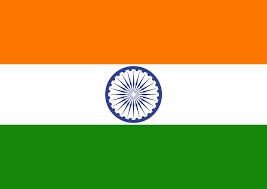India’s economy has been one of the most promising and swiftly rising of recent years. Following the economic reforms of the socialist-inspired economy in the 1990s, the country began to experience rapid economic growth, supported by market reforms and by a significant amount of inflows of Foreign Direct Investment (FDI). In 2016, the economy of India was the 7th largest economy in the world, according to the International Monetary Fund (IMF). Furthermore, India was the 3rd largest economy in Asia, behind only China and Japan.
The economic growth of the country began and accelerated during the 1990s. In 2006-2007 it reached a significant peak of 9.7%. The perpetual economic blossom that India experienced, was slightly halted by the global financial crisis. India’s economy grew at 3.9% in 2008, a figure that was amongst the highest growth rates in the world for that year. Nevertheless, it still represented a significant dip in the country’s economic growth, when compared to 2006-2007. The vast economic resources of India, allowed the country to recover quickly from the financial crisis. In 2009 and 2010, the Gross Domestic Product (GDP) experienced an 8.5% and 10.3% growth respectively. More on that for the period 2011-2015 the country’s economy increased by 6.7% on average. Further, according to figures provided by the Central Statistics Office (CSO), belonging to the Ministry of Statistics and Programme Implementation, the GDP for the second quarter (July-September) of FY 2016-17, grew by some 7.3%.
India had a trade deficit of some 137 billion US dollars in 2014, slightly increased in comparison to 2013, when the country experienced a trade deficit of 135.7 billion US dollars. More specifically the country exported products and services totalling some 311 billion US dollars, while it imported the same, to a value of some 448 billion US dollars. On the other hand, the cumulative value of exports for the period April-May of FY 2015-16 was some 44.4 Billion US dollars, while imports reached some 65.8 Billion US dollars, creating a trade deficit of about 21.4 Billion US dollars.
According to a report provided by the United Nations Conference for Trade and Development (UNCTAD), India was found to be the 3rd most attractive Foreign Direct Investment (FDI) destination for the period 2016-2018. This is somehow in contradiction with the country’s mediocre scores in several other international indicators measuring the openness of a country’s economic and business environment. Specifically, India ranked 130th out of 190 countries in the 2017 World Bank’s Doing Business report, 143th out of 180 countries in the 2017 Heritage Foundation’s Index of Economic Freedom, and 66th out of 128 in the Global Innovation Index.
|
Year |
Measure/Indicator |
Rank |
Website Address |
|
2017 |
Doing Business report |
(130 out of 190) |
|
|
2017 |
Index of Economic Freedom |
(143 out of 180) |
|
|
2016 |
Global Innovation Index |
(66 out of 128) |
According to statistics provided by the Ministry of Commerce and Industry, Department of Industrial Policy and Promotion (DIPP), total Foreign Direct Investment (FDI) inflows in India during the period April 2000 to December 2016, including equity inflows, reinvested earnings and other capital, reached some 472.2 Billion US dollars. Regarding the geographical origin of the FDI inflows, India received the top FDI equity inflows from Mauritius (34% of total FDI inflows). Mauritius was followed by Singapore (16%), Japan (8%), the UK (8%), the US (6%) and the Netherlands (6%). The bulk amount of investments over the period were concentrated on five main sectors: the Services sector which includes Financial, Banking, Insurance, Non-Financial/Business, Outsourcing, R&D, Courier, Tech. Testing and Analysis services (18% of total FDI inflows), Construction Development (8%), computer, software and hardware (7%), telecommunications (7%), as well as the automobile industry (5%).
One of the biggest advantages of the Indian economy, is the size of the country’s young and working populations. The associated figures are expected to further improve, as the proportion of the population in the working age-group of 15-59 years old, is expected to increase from 57.7% in 2001, to 64.3% in 2026. By 2050, India is projected to have the largest working age population in the world. Despite this, the unemployment rate in the country remains relatively low. According to statistics of the United Nations, the unemployment rate of India was a mere 3.5% in 2014.

